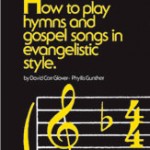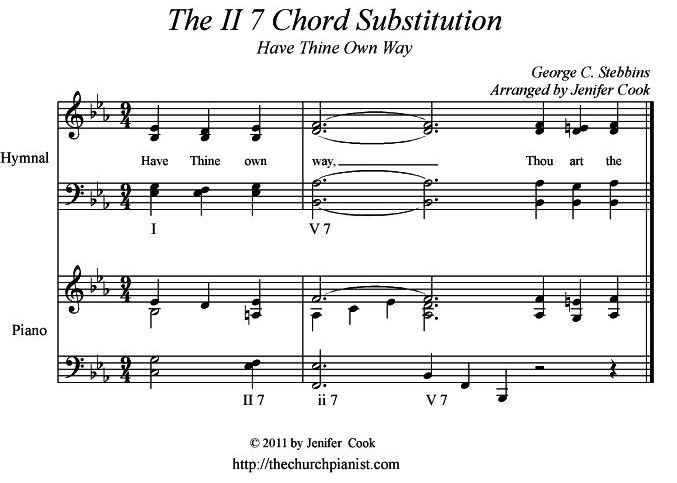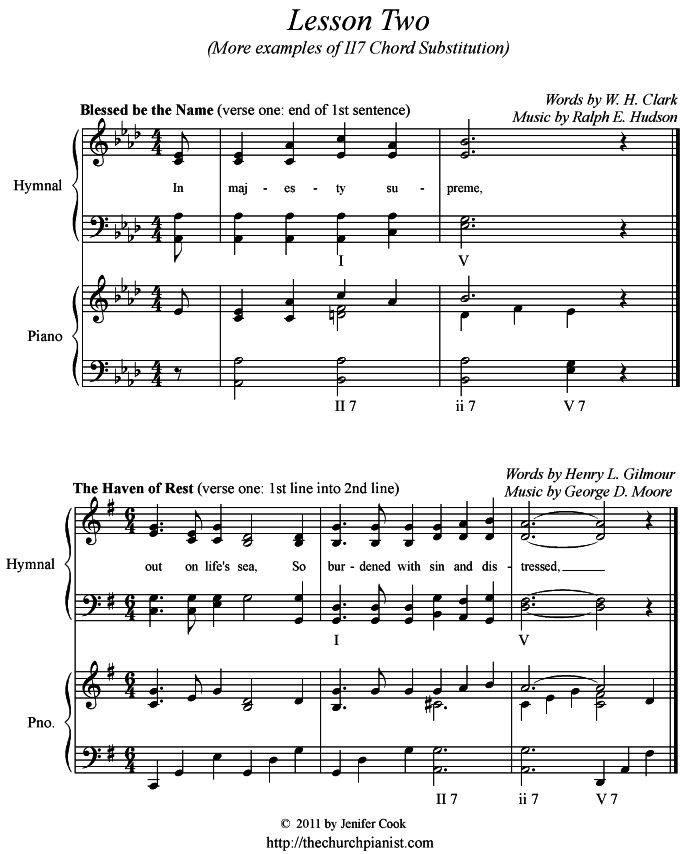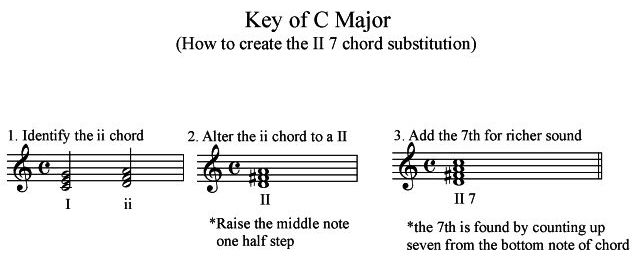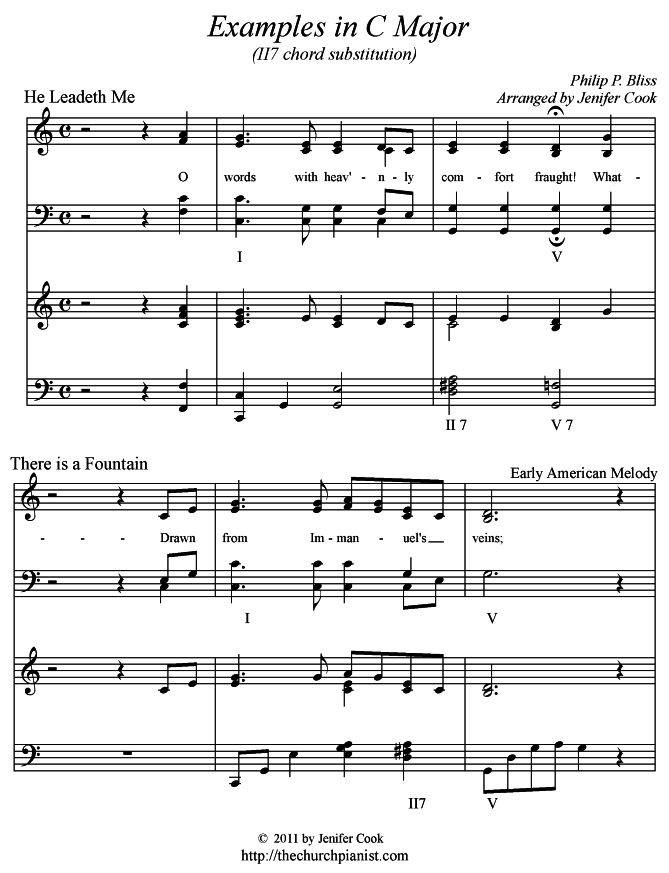Chord Substitution: Adding minor 7th to a I Chord Before a IV Chord
Sunday, January 8th, 2012Chord substitutions add color to hymnplaying! Here’s an easy chord substitution for church pianists to use.
Scenario: When a I chord is leading into a IV chord…add a minor 7th to the I chord. The minor 7th note is located a 7th above the root (bottom) note of the chord. See the following explanation of the chords before viewing the free pdf sheet of this chord substitution.
Editor’s notes for free pdf sheet on this chord substitution:
Key of F: I chord = F,A,C IV chord = Bflat,D,F I chord with added minor 7th = F,A,C,E flat
Key of G: I chord = G,B,D IV chord = C,E,G I chord with added minor 7th = G,B,D,F natural
*Special note: The substituted chord ( I 7) does not have to contain all 4 notes as you’ll discover in the examples.
Click here to download free sheet for Chord-Substitution-adding-minor-7th-to-I-chord
Challenge yourself to look for the I (minor 7th) chord already in use throughout the church hymnal. Try applying the above chord substitution in other hymns during I – IV chord progressions. Tip: Use hymns with easy keys at first until you gain confidence with the concept.
